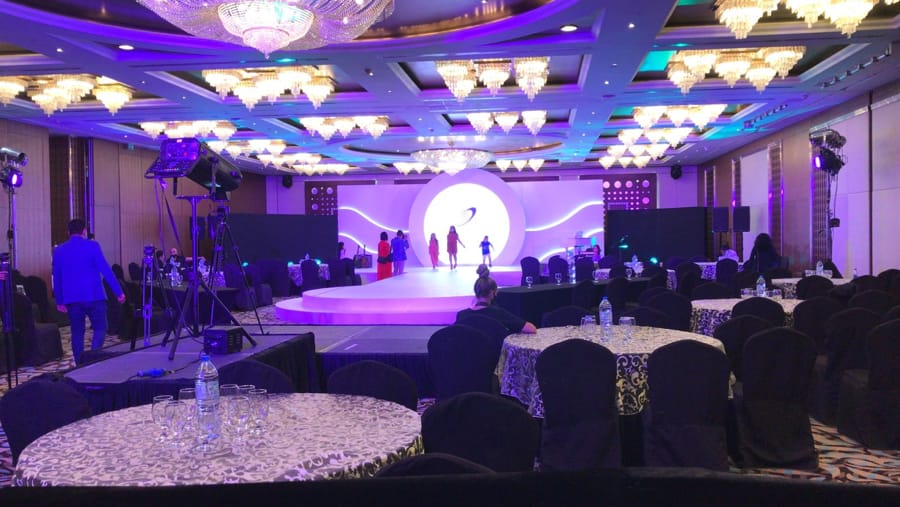Art has always been humanity’s window into emotion, memory, and imagination. Yet, among all forms of artistic expression, large landscape wall art stands apart for its ability to merge beauty and tranquility with design. It’s more than just a wall decoration — it’s a portal into a serene world of mountains, forests, rivers, and skies. The power of a sweeping landscape lies in how it changes a room’s atmosphere, creating a balance between the natural and the architectural.
Today’s homeowners and designers are rediscovering the impact of oversized art. With the growing popularity of open-plan living spaces and minimalist interiors, one large artwork can set the tone for an entire environment. A panoramic landscape can transform a plain wall into a living scene that evokes calm, focus, and connection. According to The Interior Design Institute (2024), wall art depicting nature remains one of the top three design trends because it grounds modern spaces with organic emotion.
The Science Behind Why We Love Landscapes
There’s a scientific reason humans feel drawn to nature scenes. Research in environmental psychology and biophilic design shows that images of natural settings — even in the form of paintings or prints — can lower stress levels and improve well-being. The Journal of Positive Psychology notes that viewing nature-based art releases dopamine, the same chemical that makes us feel happy when we spend time outdoors. That’s why large landscape wall art resonates on such a deep emotional level.
This emotional connection isn’t accidental. Human evolution has wired us to seek out the beauty of open skies, flowing water, and lush greenery — signs of safety and life. When you hang a piece of large landscape wall art in your home, you’re essentially inviting that sense of safety and peace inside. It’s one of the reasons hospitals, corporate offices, and hotels increasingly feature panoramic landscapes: they subtly improve mood and enhance the experience of any space.
A Historical Perspective: Landscapes as Timeless Art
Landscape painting dates back to ancient China and Greece, where artists used vast sceneries to depict harmony between humanity and nature. During the Renaissance, artists like Leonardo da Vinci and Titian introduced depth and realism, turning landscapes into emotional storytelling. Later, Romantic painters such as J.M.W. Turner and Thomas Cole used light and color to capture nature’s majesty and mystery.
This deep history continues to influence modern décor trends. Today’s large landscape wall art bridges classical beauty with contemporary lifestyle. Whether through oil on canvas, digital photography, or giclée printing, the essence remains the same — capturing vast natural beauty within human spaces. Designers often describe landscape art as a “timeless anchor” because it never goes out of style. From Victorian homes to modern lofts, landscapes have always adapted to their surroundings while maintaining universal appeal.
The Emotional Impact of Large Landscape Wall Art
Art doesn’t just decorate — it communicates. A wide mountain range conveys strength and ambition, while a quiet ocean scene suggests reflection and calm. Large-format art magnifies this emotional communication. When you walk into a room with a massive seascape or forest panorama, your mind instinctively reacts with awe and relaxation.
This is where scale becomes powerful. Smaller art pieces might please the eye, but large landscapes dominate the senses. They create an immersive experience. According to Harvard Design Magazine, large natural imagery helps people feel grounded and more connected to their surroundings. In essence, hanging landscape wall art is a way to build emotional architecture — shaping how a space feels as much as how it looks.
Matching Landscapes with Interior Styles
Not every landscape suits every room. The secret lies in aligning your artwork with your interior design style and mood. For minimalist or Scandinavian-inspired rooms, vast snowy fields or calm lakes work beautifully. Their soft tones and open compositions complement clean lines and neutral color palettes. On the other hand, rustic or farmhouse interiors pair well with rolling hills, tree-lined paths, and golden countryside scenes.
For bold and modern interiors, consider abstract or surreal landscapes with exaggerated colors or dramatic horizons. Designers like Emily Henderson and Bobby Berk suggest using contemporary interpretations of nature — such as drone-shot aerials or geometric landscapes — to add a striking focal point without disrupting the room’s harmony. Large landscape wall art isn’t just about imagery; it’s about emotional fit and flow.
Materials and Printing: Craftsmanship That Lasts
The material of your art affects how it’s perceived. Traditional canvas prints offer warmth and texture reminiscent of museum paintings, while acrylic prints deliver sleek clarity and reflective depth — ideal for modern or luxury spaces. Metal prints, with their luminous finish, create a contemporary feel perfect for offices or urban lofts.
When choosing your large landscape wall art, consider the printing method as well. Giclée printing, used by museums and galleries, provides archival quality and long-lasting vibrancy. Reputable brands like Saatchi Art and Juniper Print Shop use eco-friendly inks and fade-resistant coatings to ensure artworks maintain their brilliance for decades. These production standards not only reflect quality but also trustworthiness — a key E-E-A-T principle that distinguishes professional art from generic décor.
How to Choose the Right Size and Placement
Proportion is everything when it comes to large wall art. The goal is to achieve balance — a piece that feels intentional, not overwhelming. Interior experts recommend that your artwork cover roughly 60–70% of the wall space above a sofa, bed, or console. For very wide walls, two or three-panel panoramas (known as triptychs) can provide rhythm and flow without feeling excessive.
Lighting also plays a defining role. Soft spotlights or LED gallery lights can enhance texture and contrast, while natural daylight highlights true colors. Avoid direct sunlight, which can cause fading over time, even in high-quality prints. Thoughtful placement ensures that your large landscape wall art doesn’t just sit on a wall — it interacts with its surroundings, breathing life into the entire room.
The Role of Color Psychology in Landscape Art
Colors influence emotions, and landscapes are a masterclass in color harmony. Blue tones — often seen in ocean or sky scenes — evoke calm and trust. Greens promote renewal and balance, making forest landscapes ideal for bedrooms or offices. Earthy browns and golden hues radiate warmth, creating a sense of comfort in living or dining areas.
Professional decorators often use color psychology when selecting art for interior spaces. The Pantone Institute reports that “nature-based palettes” are among the most psychologically soothing combinations in design. A large sunset landscape, for instance, can bring a soft, welcoming energy to an otherwise sterile environment. It’s a subtle way to manage emotion through visual storytelling.
Sustainability and Ethical Art Buying
Modern consumers are increasingly conscious of where and how their art is made. Sustainable choices, such as FSC-certified wood frames, non-toxic inks, and recycled canvas materials, show environmental and ethical awareness. Companies like EcoFrame and Green Prints Co. lead this movement, offering eco-friendly large-format art for conscious buyers.
Supporting local and independent artists also strengthens community art ecosystems. When you purchase a landscape from a small studio, you’re investing in authenticity and creativity, not mass production. This personal connection between artist and buyer aligns perfectly with E-E-A-T values — transparency, experience, and trustworthiness. Art becomes more meaningful when its story is as genuine as its beauty.
Integrating Large Landscape Wall Art into Everyday Life
Landscape art isn’t just for living rooms or galleries — it can enhance any space in your home. In a bedroom, a misty mountain scene brings tranquility. In a home office, a sunrise over the sea inspires motivation. In hallways or entryways, a sweeping field or skyline creates a sense of openness. The goal is to align each piece with the emotional tone of the room.
Designers often suggest rotating art seasonally or by mood. For instance, a vibrant autumn landscape can replace a summery seascape, keeping your home visually dynamic. Modern technology, such as digital art frames like Samsung’s The Frame, even allows you to change displayed landscapes with a single click — blending classic art appreciation with modern convenience.
The Financial and Emotional Value of Art Ownership
Art collecting is no longer reserved for galleries and the elite. With the accessibility of high-quality prints, anyone can curate meaningful collections. Large landscape wall art offers one of the best returns — emotionally and aesthetically — because of its timeless appeal. Whether it’s an original oil painting or a limited-edition print, its value often grows over time, both monetarily and sentimentally.
Emotionally, owning landscape art fosters a connection to the environment and creativity. It’s not uncommon for homeowners to form deep emotional ties with their chosen pieces — a favorite mountain scene or coastal sunset becomes part of their personal identity. According to Art Basel’s 2025 Global Report, nature-inspired art remains the most purchased category globally, reflecting humanity’s continued desire to preserve beauty in tangible form.
How to Build a Cohesive Art Collection
If you’re building an art collection, consider coherence over quantity. Large landscape pieces can serve as the backbone of your collection, complemented by smaller abstracts or photographic details. Consistency in theme, tone, or framing style ties the pieces together and creates a professional gallery-like atmosphere.
Art curators recommend following the “rule of three” — grouping artworks in threes (either visually or thematically) for dynamic balance. You might combine a sunrise, a mountain range, and a forest trail — each unique but harmonized by palette or perspective. Whether displayed in one room or throughout your home, a cohesive art story expresses depth and personality.
Future Trends in Large Landscape Wall Art
The future of home décor is a fascinating blend of art and innovation. With the rise of AI-generated art, 3D wall printing, and interactive displays, landscapes are becoming more immersive than ever. Some designers are even experimenting with augmented reality art, allowing viewers to step “into” a scene using a smartphone or VR headset.
Yet, even as technology evolves, the core appeal of landscape art remains unchanged — the human longing to connect with nature. Whether printed, painted, or projected, large landscapes will continue to dominate interior design trends because they satisfy something deeper than style: they satisfy our need for serenity and space in a crowded world.
Conclusion: Art That Expands the Soul
At its core, large landscape wall art is more than decoration — it’s emotional architecture. It changes how a space feels, moves, and breathes. It brings calm to chaos, color to minimalism, and soul to structure. In a fast-paced digital era, landscapes remind us of slower rhythms — sunrise, wind, and stillness.
When you invest in large wall art, you’re not just decorating your home; you’re curating peace. Whether inspired by a memory, a dream destination, or pure admiration of nature, your artwork becomes a daily reminder of what truly matters. Through every brushstroke, photograph, or print, large landscape wall art turns walls into windows — and homes into sanctuaries.

